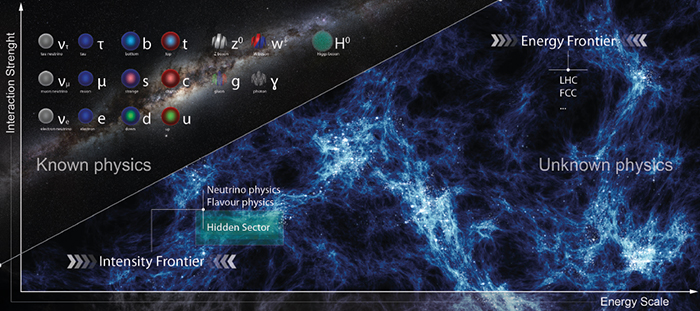The Search for Hidden Particles

Physics Motivation
Why is the SHiP physics programme so timely and attractive? We have now observed all the particles of the Standard Model, however it is clear that it is not the ultimate theory. Some yet unknown particles or interactions are required to explain a number of observed phenomena in particle physics, astrophysics and cosmology, the so-called beyond-the-Standard Model (BSM) problems, such as dark matter, neutrino masses and oscillations, baryon asymmetry, and the expansion of the universe.
While these phenomena are well-established observationally, they give no indication about the energy scale of the new physics. The analysis of new LHC data collected at √ = 13 TeV will soon have directly probed the TeV scale for new particles with couplings at O(%) level. The experimental effort in flavour physics, and searches for charged lepton flavour violation and electric dipole moments, will continue the quest for specific flavour symmetries to complement direct exploration of the TeV scale.
However, it is possible that we have not observed some of the particles responsible for the BSM problems due to their extremely feeble interactions, rather than due to their heavy masses. Even in the scenarios in which BSM physics is related to high-mass scales, many models contain degrees of freedom with suppressed couplings that stay relevant at much lower energies.
Given the small couplings and mixings, and hence typically long lifetimes, these hidden particles have not been significantly constrained by previous experiments, and the reach of current experiments is limited by both luminosity and acceptance. Hence the search for low-mass BSM physics should also be pursued at the intensity frontier, along with expanding the energy frontier.
SHiP is designed to give access to a large class of interesting models. It has discovery potential for the major observational puzzles of modern particle physics and cosmology, and can explore some of the models down to their natural “bottom line”. SHiP also has the unique potential to test lepton flavour universality by comparing interactions of muon and tau neutrinos.